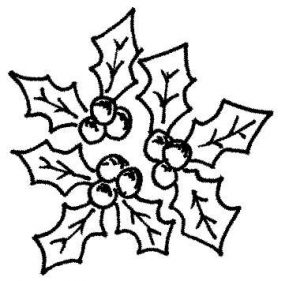 Yule : Winter Solstice : Rebirth
Yule : Winter Solstice : Rebirth
The winter solstice falls around June 21 or 22 in the southern hemisphere – this year it is on June 21 – and around December 21 or 22 in the northern hemisphere – you can check the timing for you here. It’s the longest night and the shortest day of the year, and marks the transition between darkness and light, both literally and metaphorically, as well as emotionally and physically.
Mythologically, this was when the goddess gave birth to the sun god, who was reborn as an infant and began to grow towards manhood, reaching full strength six months later at the summer solstice. It represented the return of the light, and the life force, to the world.
Astronomically, this solstice – which comes from the Latin word solstitium, from sol (sun) and sistere (to stand still) – occurs when the sun is as far north as it goes, or, in the northern hemisphere, as far south, before it turns and heads back towards the Equator. At the time of the winter solstice in the southern hemisphere, the sun will be overhead the Tropic of Cancer, making it Midsummer in the north. At Midwinter in the northern hemisphere, the sun is above the Tropic of Capricorn, the furthest latitude south it reaches.
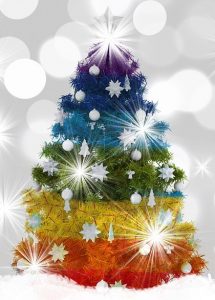 The winter solstice, also known as Midwinter, Yule, Alban Arthan (the light of the bear), Wassail, the Winter Rite, Festival of Dionysus, Saturnalia and Birth of the Sun, marks the middle of winter, and in most parts of the world it’s cold, bleak and wet, even snowing, at this time. It’s the lowest point of the Wheel in terms of energy and light, with the sun rising later and night falling earlier.
The winter solstice, also known as Midwinter, Yule, Alban Arthan (the light of the bear), Wassail, the Winter Rite, Festival of Dionysus, Saturnalia and Birth of the Sun, marks the middle of winter, and in most parts of the world it’s cold, bleak and wet, even snowing, at this time. It’s the lowest point of the Wheel in terms of energy and light, with the sun rising later and night falling earlier.
This is a quiet, reflective time – animals hide away to hibernate, seeds lie underground, closed up and cold, and nature withdraws so it can rest in order to regain its strength before it begins to regenerate. Energetically people feel tired and unmotivated too, more inclined to snuggle up on the couch with a good book or go to bed early than to leap up and take action to pursue their dreams.
Winter is for rest and reflection, conserving your energy and acknowledging sadness and loss – of dreams, of friendships, of parts of your self. It’s a good time to work with the element of water, which is associated with emotions, cleansing and letting go. Stand outside in the rain, arms outstretched to the sky and face gazing upwards, and let the water wash away any fears, regrets, sadness or painful memories. There’s something so liberating about being outside in the wildness of a storm and letting the elements wash away all that you want to let go of, but you could also dive into the ocean or soak in a scented bath to feel yourself symbolically cleansed and reborn.
Metaphorically, the energy of this season supports washing away what is no longer necessary and creating a fertile base from which to move forward. Get in touch with the things you want to change in your life, whether it’s finding a new job, meeting someone, moving house or transforming your spiritual life, and let go of anything that no longer serves you. You can’t achieve your goals until you’re certain of what they are, so listen to your inner voice and pay attention to the feelings you’ve long buried so you can focus on what’s important.
The bleakness of winter can cause depression, doctors have found, with seasonal affective disorder now a recognised medical condition. A touch of the winter blues is not uncommon because sunlight affects brain chemistry, and its lack can impact on your wellbeing.
 But the winter solstice is a day of hope, the turning point in this time of darkness, introspection and dreaming. Considered the dark night of the soul that gives birth to the creative spark, it marks the point where the dark half of the year relinquishes its hold to the light half. After this longest night, the days will slowly start to lengthen, the strength of the sun will slowly increase, and the energy, within and without, will slowly begin to build.
But the winter solstice is a day of hope, the turning point in this time of darkness, introspection and dreaming. Considered the dark night of the soul that gives birth to the creative spark, it marks the point where the dark half of the year relinquishes its hold to the light half. After this longest night, the days will slowly start to lengthen, the strength of the sun will slowly increase, and the energy, within and without, will slowly begin to build.
The midwinter festival is about the re-emergence of light from the dark, so it is a celebration of the earth’s – and our – renewal. It’s the perfect time to examine and acknowledge your potential and start dreaming of all the things you want to achieve. This is a day of rebirth, transformation and healing, a time to nurture yourself, and to rest and relax in preparation for the rush of growth in the spring.
Ways to celebrate
In the northern hemisphere the winter solstice celebration of Yule coincides with the modern season of Christmas, whose traditions were borrowed from the ancient solstice festivities. Pagans had marked this day with feasting, gift giving and candle-lit trees for centuries before the coming of Christ, honouring the goddess as she gave birth to the sun god, welcoming the sun, and celebrating the turning of the wheel of life from the barrenness and death in the fields to the rebirth of the crops promised by the lengthening days. [It is very different in the southern hemisphere, where Christmas falls in the middle of summer! You can read about being an Upside Down Witch here…]
In Ancient Egypt at this time they celebrated the birth of Horus, son of the goddess Isis, with partying, feasts and presents; the Persians maintained fires all night to honour their solar god, protect the sun and keep the forces of darkness at bay; and in Ancient Rome, the solstice celebration called Sol Invictus, the Day of the Unconquered Sun, took place, which honoured the birth of their sun god Mithras, the saviour who brought light to their world.
But with the spread of Christianity this day of light and transformation was turned into Christmas, to take the spotlight off the sun god and put it on to the son of God. In 350CE, Pope Julius I declared that Christ’s birth would be celebrated on December 25, to make it as painless as possible for the pagan Romans, who remained a majority at that time, to convert to the new religion.
All the same traditions continued, traditions that live on today in the Christmas tree that’s decorated at this time, the presents we put under it, the huge family meals we cook and the recognition of the birth of the son of God as opposed to the sun god.
To mark the solstice and absorb the energy of the season, decorate an evergreen tree, which symbolises the hope of spring’s return. Even in the dead of winter these trees remain green, filled with nature’s life force, which makes them a potent symbol of fertility and vitality. Pine trees were common – and remain popular – because they represent life, potency and rebirth, as so many trees can grow from a single cone.
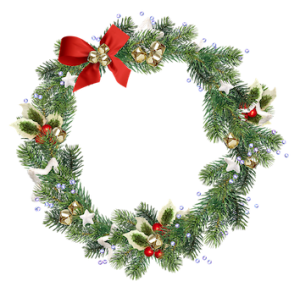 Have a Yule feast, inviting your friends over to celebrate and exchange little presents. Pots of herbs such as chamomile, rosemary and comfrey, and plants such as sunflower, ivy and elder, encapsulate the magic and energy of the season. Decorate your home with pine cones and sprigs of mistletoe and holly, and drape the table in a red, green or gold cloth, with candles in the same colours.
Have a Yule feast, inviting your friends over to celebrate and exchange little presents. Pots of herbs such as chamomile, rosemary and comfrey, and plants such as sunflower, ivy and elder, encapsulate the magic and energy of the season. Decorate your home with pine cones and sprigs of mistletoe and holly, and drape the table in a red, green or gold cloth, with candles in the same colours.
If you have a fireplace, burn the traditional Yule log (usually pine or oak), lighting it at dusk and letting it burn through the night to welcome back the sun. Keep a little of the burned log to start your fire next year, and collect the ashes of the sacred wood for healing spells and rituals, as they embody the life-giving powers of the sun.
Stay up all night, celebrating, laughing and sharing your plans for the future, then go outside as morning approaches to welcome the first rays of the sun. Toast the dawn, honour the corresponding dawning of your own potential, and give thanks for this energetic reawakening. Or you may prefer to make it a solitary celebration and inner journey, going within with a solo ritual or journalling session to embody the energy of the sabbat on a deeper, more personal level.
In the southern hemisphere, the winter solstice falls in June, six months before Christmas, which can make things a bit confusing. But there is increasing awareness in Australia and other Down Under countries that Christmas is based on magical winter traditions, and many festive-themed events, such as the Winter Magic Festival, Yulefest and Hollyfrost, are now held in the correct season, in recognition that the winter solstice celebration of Yule should not take place in December, in the heat of the southern summer, but in the cool and introspective months of winter.
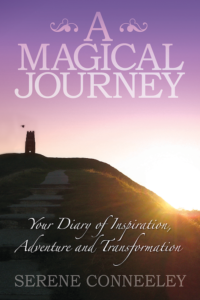 In your journal
In your journal
This festival of hope and renewal is the perfect time to reflect on the past year, to acknowledge the good and the bad, the dreams you fulfilled and the ones you let die, and the things you still hope to achieve. In the northern hemisphere New Year’s Eve is approaching, and people contemplate the end of one year and the start of the next, which fits perfectly with the seasonal energy.
Start by reviewing your past 12 months. If you’ve been keeping a journal, re-read it, then summarise the high and low points, pondering how much you have changed, how much you achieved, and where you’re at now compared to last winter. If you haven’t kept a written record, just let your memory drift, and make notes of the events and emotions you recall. If you start feeling nostalgic and introspective, dive right into it and embrace the recollections.
This is a time for nurturing your heart and soul, listening to its wisdom, tapping in to the subconscious thoughts that have been buried and learning the lessons of the past so you can emerge from your wintry cocoon into the new light and energy to come. You’re preparing your soul’s fertile ground for the seeds you’ll soon plant, by drawing on the richness you already have deep within.
This solstice is also a good time to be still and quiet, to look inside your heart and soul and ponder the Mysteries. It’s important for your own wellbeing and peace of mind to allow such introspection and self-examination, to let yourself slow down and decide what it is you really want, otherwise you may find yourself pursuing a goal that isn’t yours or a dream you no longer care about.
At this time of year, in the middle of winter, the land appears to be dormant or even dead, yet it’s not – it’s simply awaiting the touch of the sun to bring it back to life. Likewise you are filled with the seeds of your dreams, and need only recognise them and acknowledge them, and shine the light of your inner strength on them, to awaken and invigorate them. The solstice is a great time to work out what it is you want to achieve, and start outlining in broad strokes the ways to do so.
Light a gold or yellow candle on Midwinter’s Eve to symbolise the sun and its activating energy, and breathe in its vibration and light as you stare into the flame and focus on your dreams for the coming year. Open yourself up to the promise of new growth and achievement, the energy of renewal and the rebirth of your own self and creativity as the sun is also reborn.
Symbolically and energetically it’s a time to honour your inner wisdom, consider the lessons you learned during winter’s introspection and integrate them into your life so you can start to initiate change. And have patience with yourself. There is a regenerative power in stillness, in preparing and being rested and ready for when the energy of growth and productivity of springtime returns.
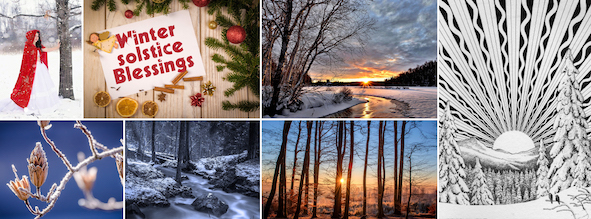


Get Social